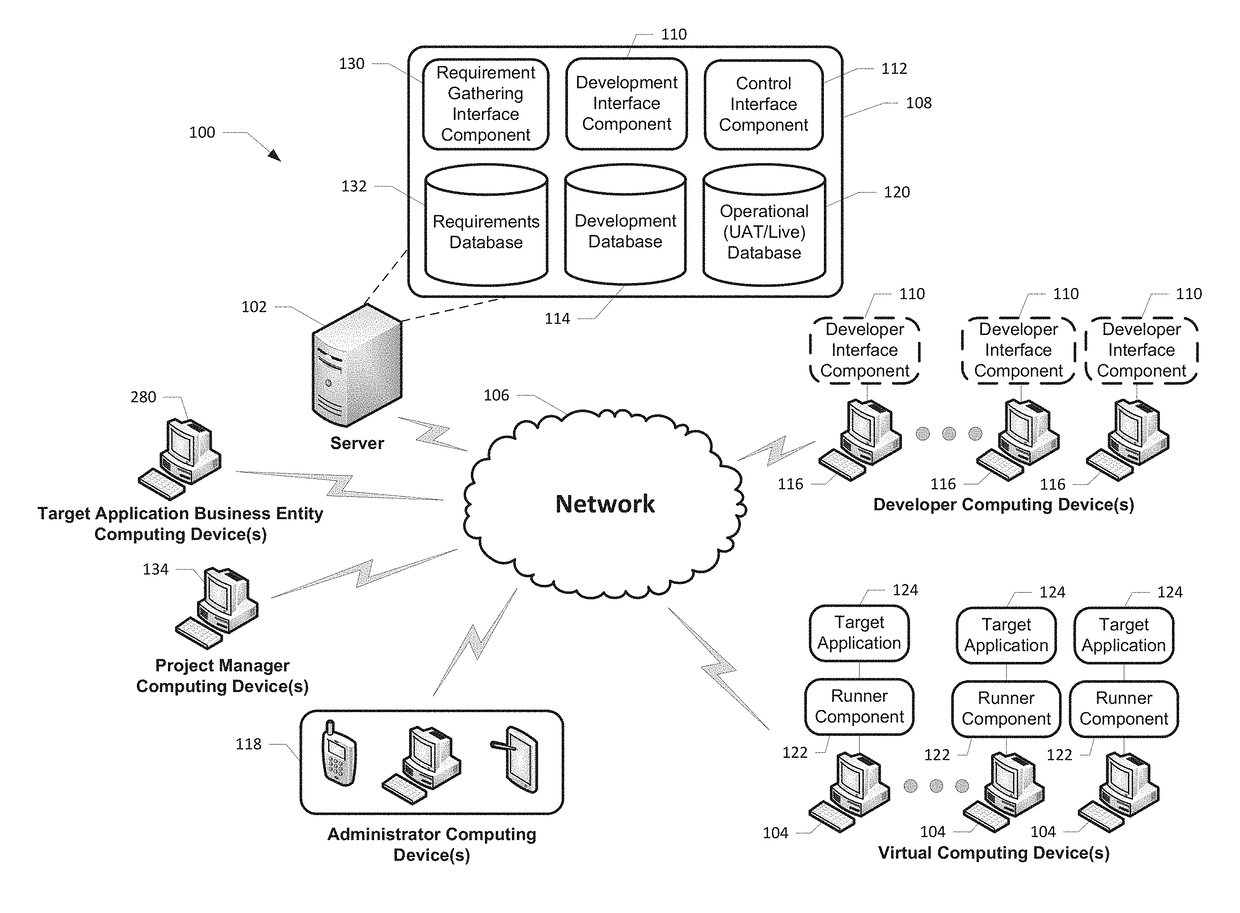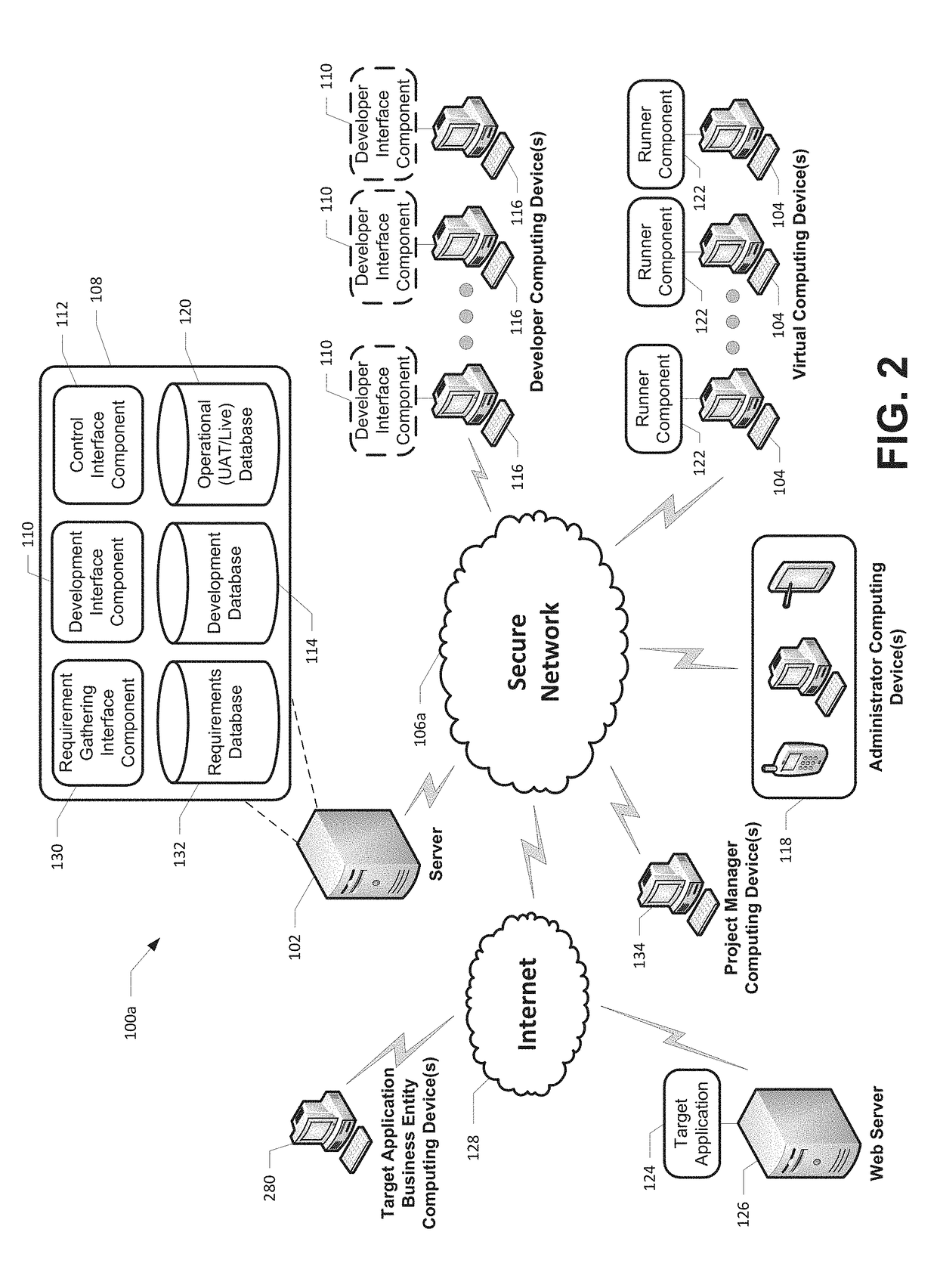Robotics process automation platform
a technology of automation platform and robot, which is applied in the field of robot-driven process automation platform, can solve the problems of incompatibility of order placement website with software, inefficiency in the back-end of certain computer-driven processes, and inability to connect data to independent computer applications
- Summary
- Abstract
- Description
- Claims
- Application Information
AI Technical Summary
Benefits of technology
Problems solved by technology
Method used
Image
Examples
Embodiment Construction
[0046]Generally, the system, tools and methods described herein for providing a robotics process automation platform for developing a workflow, deploying the workflow on at least one virtual computing device, and managing and monitoring the workflow running on the at least one virtual computing device. The workflow, also referred to as a robot, may include computer-executable instructions or one or more sequences of instructions that are configured for performing automated processes within a target computer application (“target application”) using data, documents, or other elements that are stored in the virtual computing device or provided to the virtual computing device by or through the use of another computing device or data source. A workflow operates to automate at least one process within the target application that is typically performed by a person, which may be scaled using a plurality of virtual computers to increase efficiency of processing data, documents, or other elem...
PUM
 Login to View More
Login to View More Abstract
Description
Claims
Application Information
 Login to View More
Login to View More - R&D
- Intellectual Property
- Life Sciences
- Materials
- Tech Scout
- Unparalleled Data Quality
- Higher Quality Content
- 60% Fewer Hallucinations
Browse by: Latest US Patents, China's latest patents, Technical Efficacy Thesaurus, Application Domain, Technology Topic, Popular Technical Reports.
© 2025 PatSnap. All rights reserved.Legal|Privacy policy|Modern Slavery Act Transparency Statement|Sitemap|About US| Contact US: help@patsnap.com



